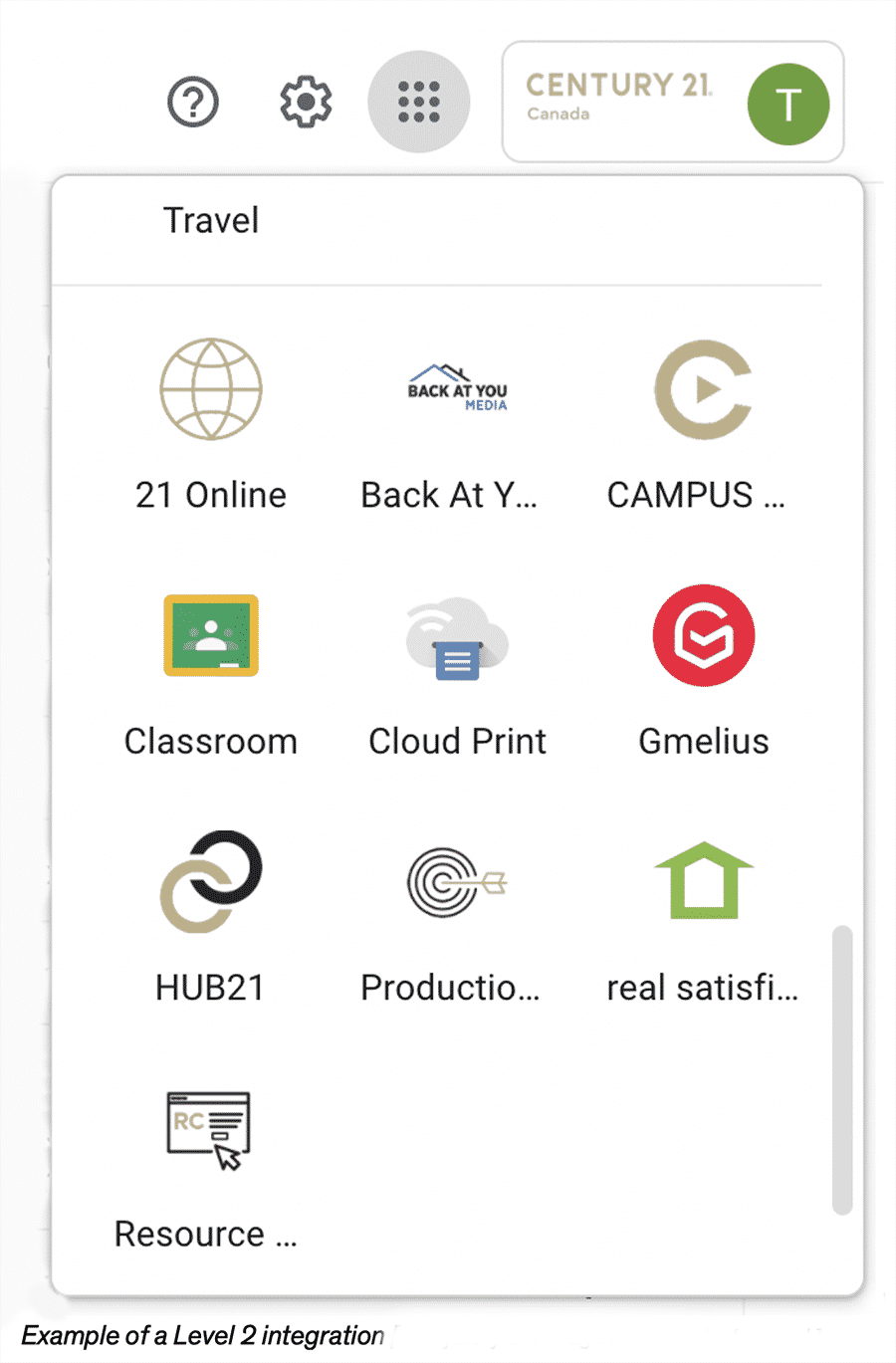As real estate brokerages and teams increase their reliance on technology more each year, the ability to ensure that their tools from multiple vendors sync with each other becomes even more critical.
Brokerages and teams need to be thinking about integrations because no one system they use has everything they need – there’s not one catch-all technology platform. Marketing tools, websites, reporting, accounting, transaction management, CRMs, are usually all provided by different vendors. In fact, according to T3 Sixty research, the average brokerage has tools from 12 different vendors.
Integrations support efficiencies by removing the need for duplicate entry, provide seamless, fast insight into broad company performance from a variety of data sources, and reduce errors and mistakes.
To help real estate leaders better assess their technology stacks and planning, this article dives into the world of real estate brokerage technology integrations – specifically the four primary types of integrations.
- Level 1: This basic integration covers connections that essentially involve a link to another third-party system. This requires users to access the connected system with separate login credentials.
- Level 2: This level of integration allows users to access multiple technologies within a single platform using a single-sign-on methodology.
- Level 3: With this level of integration, data passes between systems in a single direction. For example, a website might pass behavioral activity to a CRM.
- Level 4: This is the deepest level of integrations. It involves a two-way data exchange – systems actively pass information back and forth, often via an application programming interface (API).
Level 1
Level 1 integrations are common with real estate intranet solutions or dashboards essentially designed as simple hubs to collect links to all of a broker or team’s essential tools. The vast majority of real estate tech tools accommodate this, as it does not require any custom development.

Level 2
Level 2 integrations require a bit more technical development and are thus a bit less common, but they are still prevalent in many real estate software applications. To work as a Level 2 integration, the technologies need to have implemented a single-sign-on methodology that matches the platform brokerages or teams want to use. A common methodology is OAuth, for example.
If vendors offer the methodology their single-sign-on platform requires, then brokerages don’t need to do any custom development or request any of their vendors.
Level 3
Level 3 integrations require a greater, more custom connection between two vendors. Common examples of this type of integration include MLS and IDX data feeds. Common use cases include passing listing and lead data from one system to another. Passing transaction data and CRM data via this type of integration is also becoming more popular.
Often these connections are facilitated via an API. Sometimes vendors have predeveloped Level 3 integrations with each other. However, it’s not always easy to tell which products have established such integrations. Some vendors provide clearer specs on this than others.
If not already made, this type of connection often takes time and development resources. In many enterprise software systems, brokerages and teams could be staring at large costs for a system to integrate or long lead times. The tech tool Zapier can provide a shortcut, as it allows brokerages and teams to establish Level 3 integrations among tools they use without having to request any custom development from the vendors themselves.
Level 4
Level 4 integrations are the deepest and most useful for brokerages and teams. They are also the rarest and most expensive to establish if vendors have not already tied their tools together in this way. These integrations are often facilitated by APIs.
These integrations are so valuable because they feature true seamless connections between separate systems. Data can be sent bi-directionally, so a website can pass real-time information to a CRM, which can then communicate immediately with an email marketing platform to influence timing and marketing distribution if all three systems feature Level 4 integrations. Then the CRM will automatically update based on email opens and clickthroughs, which can influence website presentation.
There are two types of APIs available for Level 4 integrations: closed and open. Vendors with closed APIs must approve connections with each vendor who wants to integrate with them. Vendors who offer open APIs essentially publish their connection specs and allow any other vendor to establish a deep connection. Even with an open API, vendors still have to deploy development time to establish the connection. Tech firm API Nation has emerged as an interesting solution for brokerages and teams who want to establish Level 4 integrations with vendors who have open APIs.
Large brokerage enterprise platforms have begun to establish extensive Level 4 integrations with other technologies. Some of these platforms include MoxiWorks, dotloop, Propertybase, Inside Real Estate, Lone Wolf Technologies. Determining the status of integrations with specific technologies requires reviewing the integration info published by these companies or direct inquiries.
Takeaway
When evaluating new technology, brokers and team leaders need to determine how it will integrate with their current technology portfolio. In fact, they should complete a full integration audit as part of developing their tech strategy, as the power of real estate technology increasingly becomes not what you have, but how you use it. For questions about evaluating the integration status or potential of your current technology systems, reach out to me, Travis Saxton, senior vice president of tech consulting at T3 Sixty, at travis@t3sixty.com.
